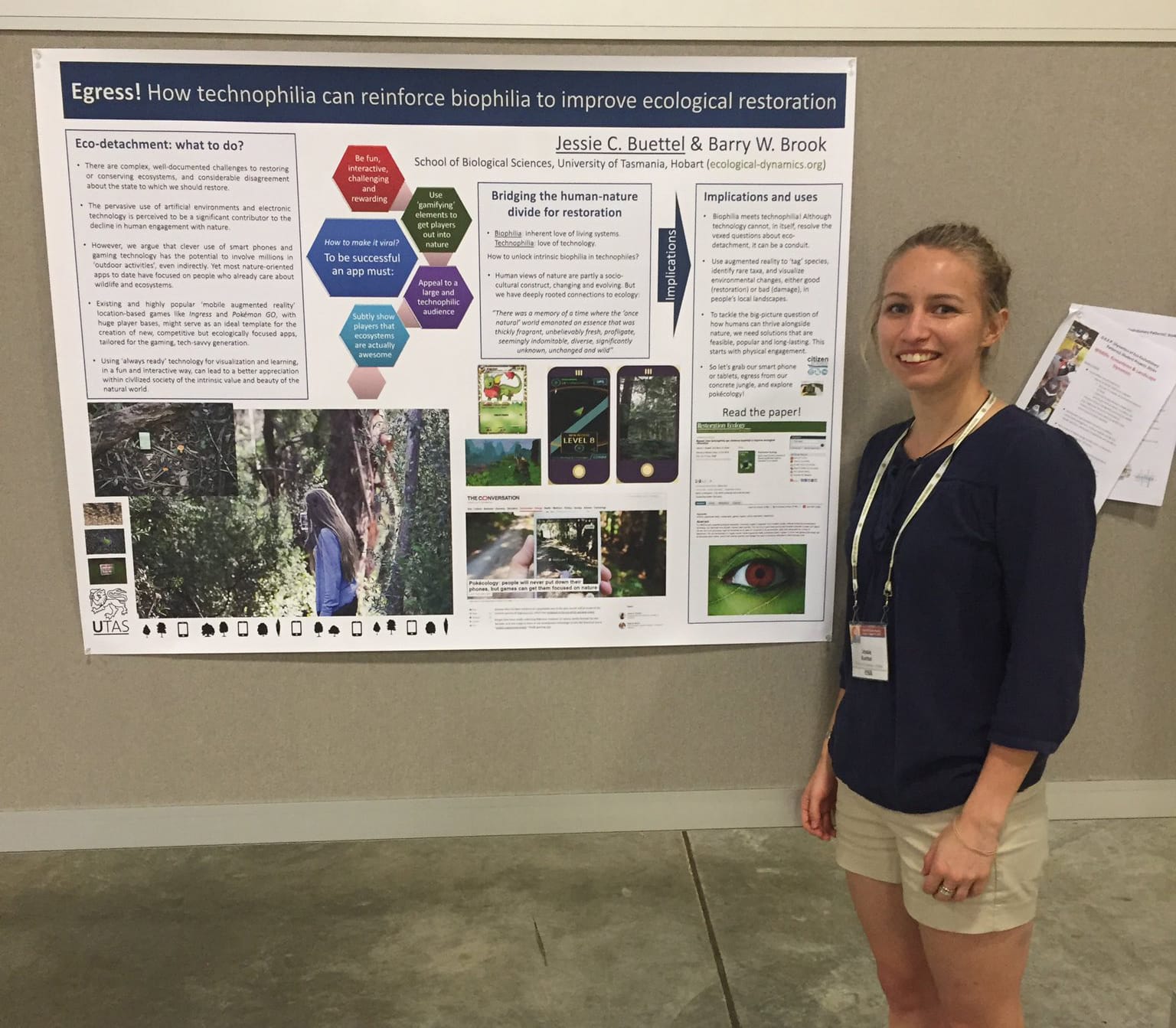Using TERN research infrastructure and data to build better models that predict how forests will respond to global change and forestry management—vital information for the conservation and management of tall eucalypt forests in Australia.
 |
One of the fundamental aspects of Jessie’s research at the TERN sites is understanding the role of fallen trees in forests so that more accurate forest models for research and management can be developed |
Ecosystem models help improve and validate the predictions scientists make about the ways in which the agents of global change, such as climate and land-use, might be manifested and cause impacts on ecosystems. In order to develop a realistic model of a forest, researchers first need to determine the relative importance of the different ecological processes that might be driving its dynamics over space and time.
University of Tasmania researcher Jessie Buettel is using TERN infrastructure and data to understand these ecological processes and build a model that accurately predicts a forest’s future dynamics and stability. This model will allow for forecasts of the response of forests to global change, disturbance events, and forestry management.
Jessie is using TERN AusPlots’ 1ha (100 × 100 m) ecosystem monitoring plots located in Australia’s tall eucalypt forests, and the openly available long-term baseline data collected from these plots, to address a number of broad forest science questions including:
- Are there general patterns (clumped, randomness, regular) that are typical of forests around the world, and what are the ecological processes (e.g., species traits, environmental condition) that might influence these patterns?
- How important are biotic and abiotic factors and hidden processes in shaping the patterns that are observed in forests?
- How can we use information on pattern and process in forests to provide validated modelling tools for forest management and conservation?
At the 1-ha TERN AusPlots, Jessie is analysing the spatial location and attributes (size, form, species identity, status) of all living and standing dead trees (>10cm), as well as litter assessments and canopy photographs of each 20 × 20 m subplot.
She is then combining these data with additional information collected during 2015-2016, including: site topography, counts of small fallen wood (5-20cm diameter), location and attributes of all large fallen trees (>5m length, >20cm diameter) and categorical information on a range of biotic and abiotic understory components.
Jessie says that one of the most fundamental aspects of her research at the TERN sites is understanding the role of fallen trees in forests.
“I’m most interested in understanding the factors that influence a treefall event, including how often they occur, how big they are, and how these events shape the location and growth of the living trees,” says Jessie.
“By studying the current ‘snap-shot’ position, size and decay state of fallen logs, I’m hoping to unlock deeper-time information on the past processes that have shaped the forest as we see it today.”
All this information that Jessie collects is essential for the development of better forest models. For example, Jessie translates slope measurements into a digital terrain model (DTM) and combines it with treefall information to give detailed images that help understand processes that influence forest structure and function.
The TERN AusPlots permanent plot network has been an essential underpinning of the success of Jessie’s fieldwork campaign, allowing her to travel to the magnificent tall karri and tingle forests of Western Australia, and potentially, in the future, many other locations around Australia including the Otways (Victoria) and forests of New South Wales (which differ dramatically in characteristics such as rainfall, fire frequency and understory).
“I hope that my research will provide a more comprehensive understanding of how the components of the living and the dead forest interact. By determining the major processes that influence forest structure and function, I will develop a model of forests that capture generalities useful for the conservation and management all tall eucalypt forests in Australia, and indeed, such forest ecosystems worldwide,” says Jessie.
“As astronomers have discovered when studying the intangible fabric and evolution of outer space, the space-for-time reconstruction of natural history is a perfectly valid way of exploring eco-evolutionary processes. Linking observed patterns in forests to dynamic processes can promote the discovery of novel, and testable predictions.”
- All TERN AusPlots outputs are freely available to anyone who would like to use them. For more information on TERN’s plot based ecosystem surveillance monitoring network visit the TERN AusPlots website or contact Ben Sparrow.
 |  |
Jessie conducting fieldwork on a large treefall at TERN’s Styx AusPlots site in southern Tasmania (left) and at TERN’s Mt Frankland AusPlots site in WA (right) (images courtesy of Barry Brook) | |
Published in TERN newsletter November 2016









